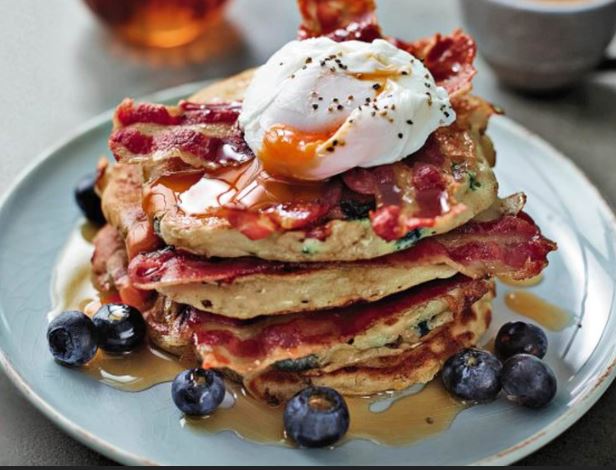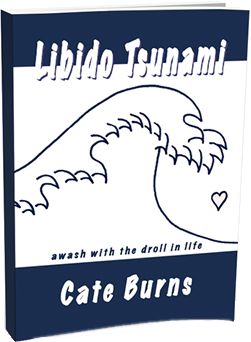Food Glorious Food

The other day I spent time with a lovely sixteen-year-old young woman. I remembered how self-conscious I felt about my body at that age. I’d already begun to restrict my diet in attempts to lose weight. In the 1960s, during my teen-aged years, my friends and I idolized the British model, Twiggy, whose figure matched her name. Although I maintained a normal weight, I felt a compulsion to look like this scrawny idol. I perceived myself as a typical teen-ager, filled with angst and mortified at the slightest thing. If I looked like Twiggy, I knew I’d feel confident and successful. Thus began decades of struggle with food.
My mother had harbored a life-long desire to lose weight. I remember her forming exercise groups and diet plans with neighborhood women. When I look back on this, it seemed that chronic female discontent with their figures saturated our society then, and still does.
In my twenties, I continued to limit my nutrition and, as a result, often battled the urge to overeat. When I gave in and gorged, I felt ashamed and anxious that I couldn’t control such a simple part of life. When I struggled in an intensely competitive graduate school program in studio art, I almost completely stopped eating for over a year. Protein drinks sustained me, along with afternoon treats of hot chocolate with milk. The word “anorexia” wasn’t in common usage during the 1970s. If I heard it, I probably wouldn’t have thought it applied to me. I felt that I’d solved my eating problem. I lived in a studio in a large old downtown building in Los Angeles. Without the bother of cooking, I could devote all my time to my creative processes, often all night. In the art world, such obsession was the mark of a true artist. With this behavior, I fit in with my peer group and felt accepted. Luckily, a psychology professor, Kevin, lived in a loft down the hall and slipped me occasional corn chips and avocados. With almost no preparation time involved with these foods, I gladly accepted his gifts. In retrospect, I now appreciate Kevin’s compassion. With his help, I maintained my weight at the low end of normal.
During this time, an aunt and uncle visited and took me out for breakfast. I stared with amazement, mesmerized by their pancakes, soaked with maple syrup, along with two eggs each, bacon, toast, butter and orange juice. I picked at my oatmeal and tried not to stare and drool at their sumptuous spread that wafted heavenly scents to my nose. Silvery syrup, oily eggs and bacon grease coated the meal and made it almost sparkle. Their feast appeared magical and so strange that my relatives might have come from another planet. I couldn’t imagine ingesting these odd items. I thought my aunt and uncle were the odd ones, not me.
At age twenty-eight, I experienced the sad death of a boyfriend. By this time, I’d completed graduate school and lived in a house rather than a studio. I began to perceive that my eating habits were abnormal and probably bad for my long-term health. I decided that part of my healing process would be to, at last, become comfortable with my body and eating habits. With a therapist’s help, I began to accept routine solid nutrition. However, food selection produced anxiety. Would I punish myself by denying my body sustenance? Would I binge and bring on shame?
Most of the time during the first year of rehabilitation, these emotions intruded and were so severe, I lost my sense of taste. At the time, I didn’t realize it. It felt normal that everything I put in my mouth seemed like cardboard. Only much later, did I comprehend that I hadn’t experienced flavors for years.
I comprehended how distorted my relationship with food had become. I felt determined to become sensible about meals. Bit by bit, I learned to accept that, sometimes, I ate too much. At other times, I consumed a small amount. Even when my body weight rose to the upper end of normal, I stuck to my meal plans. It took about ten years for me to gain confidence in my relationship with food and to be happy with a normal weight. I learned how to be kind to myself. No more Twiggy for me.
Slowly, a new concept emerged. Eating could be a pleasure. However, at times, when overcome with anxiety, such as when hosting dinner parties, I still lost my ability to taste. I learned to ask someone else to sample the dishes before I served them to guests. However, between bouts of anxiety, I savored a tart plum, a sugary mango, sharp lemon, salty nuts, roasted potatoes, or a subtle earthy avocado. All of these flavors felt like a glorious revelation.
I developed a habit of asking my body what it would prefer for a certain meal. When feeling hungry, I mentally contemplated: Which nutrients would be most beneficial for me at this time? I usually got a clear sense of my cells hankering to soak in a certain substance, such as the orange goodness of a carrot. I made a vow to tune into my body and honor its needs.
Ten years ago, tragically, a friend, Anais, developed a bad cancer. A group of artistic friends met with her in a home theater, to chit chat and watch a movie. I brought a new food at that time, popcorn sprinkled with spirulina and seaweed. Others offered fun artistic contributions, such as nori-wrapped cantaloupe or kiwi and goat cheese wraps. Trying not to stare, I noticed that her eating seemed desperate as she sampled each intriguing morsel. I remember her anxiously scarfing down my popcorn as if it might have the power to heal her advanced disease.
Because I had linked anxiety with eating for so many years, I recognized her fearful edge and felt empathy for her. How I wished Anais’ meals could be pleasurable instead, especially when she had only months left to live.
Now that I’m in my seventies, I’m very grateful that I’ve learned how to relish meals. I feel an inner trust that my eating habits can remain stable, free of anxiety and self-punishment. Pleasure in nutrition is an enormous gift from nature. How lucky I am to experience such joys. I wish the same for my sixteen-year-old friend.

Cate Burns is the author of Libido Tsunami: Awash with the Droll in Life, in which she unearths the ludicrous in the emotional live traps surrounding us — in families, friends and disastrous romances. Get it on Amazon today.
